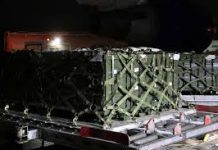
In a dramatic policy shift, major European banks are strengthening their ties to the defense industry — a sector previously viewed with suspicion due to ethical and reputational worries, but now regarded as essential for both financial stability and regional security, according to Bloomberg. Leading financial institutions, including BNP Paribas, Deutsche Bank, Commerzbank, and Societe Generale, are spearheading initiatives and partnerships to aid Europe’s growing defense capabilities.
This change reflects growing geopolitical tensions and a collective policy priority to bolster European defenses. Banks are increasingly turning their resources toward financing companies that produce military equipment, reflecting a significant departure from their previous practices and a growing recognition of the financial opportunity this presents.
For years, European banks kept their distance from defense financing, choosing instead to back sectors such as green energy. However, growing conflict and policy pressures have forced a reevaluation. European Union member states have significantly raised their defense budgets — collectively allocating over €270 billion in 2024 — fueling strong demand for financing and creating a new opportunity for financial institutions.
One significant step came in early 2025 with the European Banking Federation’s launch of a task force designed to streamline funding for the defense industry. This group, supported by major banks, aims to enable greater financial support for companies developing military technologies — reflecting the growing strategic role banks can play in strengthening European defense.
BNP Paribas, for instance, recently introduced a new exchange-traded fund (ETF) focusing on European defense companies. The BNP Paribas Easy Bloomberg Europe Defense ETF, listed in Paris in May 2025, comprises roughly 30 firms that contribute directly to European defense programs. According to Marie Sophie Pastant, BNP Paribas Asset Management’s head of portfolio management, this fund is meant to enable investors to align their portfolios with firms strengthening Europe’s defensive capabilities.
This fund is expected to soon become available on additional exchanges, including Deutsche Börse’s Xetra and the Borsa Italiana. Sabrina Principi, global head of business development for ETFs and indices at BNP Paribas, explained that the European defense industry is poised for significant expansion in the years ahead.
Deutsche Bank, meanwhile, is strengthening its team to handle defense-related financing and is growing its exposure to companies developing sophisticated military equipment, from fighter jets to radar and surveillance systems. Some industry insiders say the bank is increasingly involved in financing the production of the Eurofighter Typhoon — a multirole fighter manufactured by European firms including Airbus, BAE Systems, and Leonardo — which stands as a testament to growing financial support for the sector.
The Eurofighter, which can reach Mach 2 and carry advanced weapons, exemplifies the high-tech innovations European banks are eager to fund. It offers a flexible platform for both air-to-air and air-to-ground operations — a key consideration for NATO’s defenses — and stands out due to its low operational costs and maneuverability, even if it falls short of the F-35’s stealth capabilities.
Such financing is not limited to aircraft; companies like Rheinmetall AG, a German manufacturer of tanks and artillery, are experiencing growing financial backing for their production. Rheinmetall’s Leopard 2 main battle tank — recognized for its powerful 120mm smoothbore gun and strong defensive features — is a key asset for NATO allies. Rising European demand for these vehicles, especially from Ukraine, is fueling additional financing from banks.
This policy shift resonates with historical precedent. During the Cold War, European banks frequently funded NATO’s military expansion, although the process was less visible due to limited media scrutiny. In the following decades, financing predominantly flowed toward civilian industries — a reflection of changing policy priorities — but today’s growing geopolitical pressures are reversing that trajectory.
Commerzbank, for its part, is strengthening its team to specialize in defense financing, a move supported by the German government as it prepares for growing defense investment — particularly in developing its own weapons and defense technologies, like Diehl Defence’s IRIS-T air defense system. The compact and maneuverable IRIS-T is designed to destroy aerial targets, adding depth to European defenses alongside its American counterpart, the Patriot.
Societe Generale is following a similar path. The French bank, with its longstanding relationships in the aerospace and defense sectors — including financing for companies like Airbus, which produces both commercial aircraft and military helicopters — is now extending greater financial support to defense-related initiatives. The NH90 multirole helicopter, used by numerous NATO members for operations ranging from troop transport to search-and-rescue, stands as a key example.
Furthermore, the European Investment Bank (EIB) is increasingly a major actor in this space. In 2024, the EIB committed €6 billion toward strengthening European defense capabilities, with €1 billion set aside for small and medium-sized enterprises in the sector. This funding, typically in the form of loans, is expected to unlock up to €25 billion in additional commercial financing by 2027 — reflecting growing confidence in the industry’s financial stability.
While the growing role of banks in defense financing brings significant financial opportunities, it is not without controversy. Some EU member states have restrictive export controls, adding complexity to cross-border transactions, while many civic groups criticize financial institutions for putting profits ahead of ethics. To ease these worries, banks highlight their role in strengthening collective European security instead of framing their involvement as pure financial opportunism.
This policy shift is already affecting financial markets. The Stoxx 600 Banks Index fell 10% in early April 2025 due to growing tariff worries but recovered by nearly 9.3% later that month, reflecting growing optimism about profits stemming from defense financing.
Some analysts say financing for the sector could grow by up to 15% by 2028 — a trajectory that underscores the growing significance for European banks’ portfolios. Meanwhile, European banks are outperforming their U.S. counterparts, with firms like Morgan Stanley noting their growing financial resilience amid an unsettled international climate.
The defense industry itself is experiencing a transformation. Thales, for instance — a French manufacturer of radar and missile systems — is increasing its production to account for growing European demand for sophisticated defenses. Thales’ Crotale platform, designed to destroy low-flying aerial targets, exemplifies this expansion.
Saab’s Gripen fighter — a Swedish-built aircraft valued for its cost-efficiency, adaptability, and advanced electronic systems — is also seeing growing orders from Eastern European militaries, reflecting their need to modernize their forces quickly.
This policy reversal must be placed within its historical context. During the Second World War, European banks kept their financing limited while their respective governments funded their own defenses. The Cold War saw NATO’s collective funding ease financial pressures, but today, the European Union’s growing strategic independence is putting greater financial responsibility back into the hands of private financial institutions.
Initiatives like the European Defence Fund, which launched in 2017, are adding additional resources to collaborative defense programs — fueling the growing need for bank financing alongside government funding.
Some financial institutions are turning toward innovative instruments, like green bonds with a defense-related or “dual-use” component, in a bid to align financial incentives with growing policy priorities while addressing social and ethical sensitivities.
Other banks are structuring large-scale financing through public-private partnerships — especially for ambitious projects such as the Future Combat Air System (FCAS), a fighter platform expected to combine drones, satellites, and artificial intelligence by the 2040s, at a projected cost of €100 billion.
This stands in contrast to the longstanding practices of major U.S. banks, which have frequently supported their country’s defense industry — extending financing to firms like Lockheed Martin or Raytheon — alongside a much larger federal defense budget of $816 billion in 2024.
As European banks become more involved in their own defense industry, their growing role could enable European firms to become more competitive in securing contracts in Asia and the Middle East — a challenge to traditional U.S. domination in the sector.
This growing financial reliance upon the defense industry, however, comes with its own set of uncertainties. If geopolitical tensions ease, the demand for weapons could diminish, leaving banks with non-performing loans and growing financial vulnerabilities. Furthermore, growing civic opposition and ethical controversies related to financing the defense sector are likely to remain a concern in the years ahead.
For now, European banks view their growing involvement in defense financing as a pragmatic and strategic necessity in a world increasingly defined by conflict and uncertainty. This policy reflects their growing role as financial enablers in the pursuit of greater European strategic independence — a role that will profoundly influence both their profits and the future of European defense.





